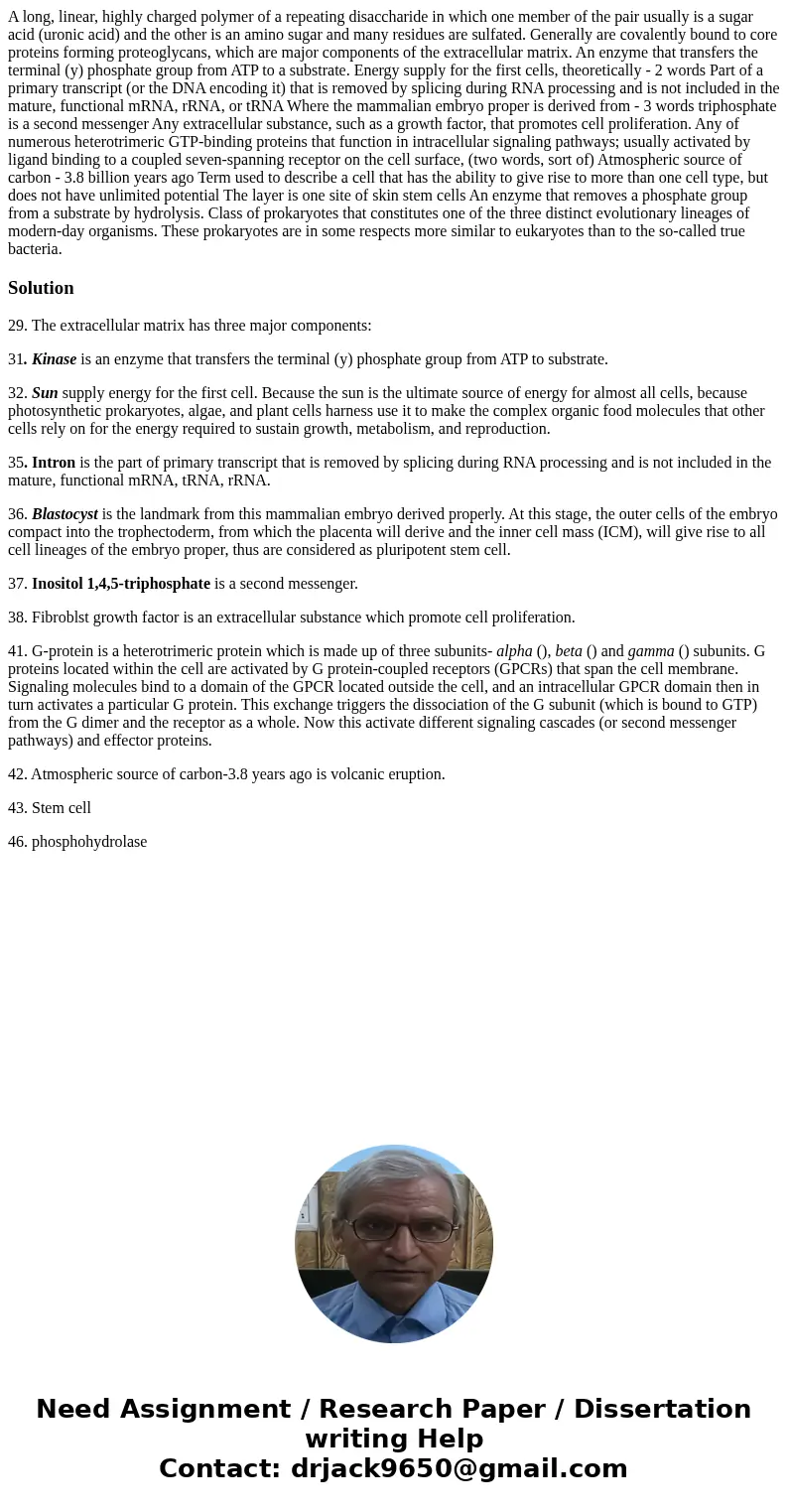A long linear highly charged polymer of a repeating disaccha
Solution
29. The extracellular matrix has three major components:
31. Kinase is an enzyme that transfers the terminal (y) phosphate group from ATP to substrate.
32. Sun supply energy for the first cell. Because the sun is the ultimate source of energy for almost all cells, because photosynthetic prokaryotes, algae, and plant cells harness use it to make the complex organic food molecules that other cells rely on for the energy required to sustain growth, metabolism, and reproduction.
35. Intron is the part of primary transcript that is removed by splicing during RNA processing and is not included in the mature, functional mRNA, tRNA, rRNA.
36. Blastocyst is the landmark from this mammalian embryo derived properly. At this stage, the outer cells of the embryo compact into the trophectoderm, from which the placenta will derive and the inner cell mass (ICM), will give rise to all cell lineages of the embryo proper, thus are considered as pluripotent stem cell.
37. Inositol 1,4,5-triphosphate is a second messenger.
38. Fibroblst growth factor is an extracellular substance which promote cell proliferation.
41. G-protein is a heterotrimeric protein which is made up of three subunits- alpha (), beta () and gamma () subunits. G proteins located within the cell are activated by G protein-coupled receptors (GPCRs) that span the cell membrane. Signaling molecules bind to a domain of the GPCR located outside the cell, and an intracellular GPCR domain then in turn activates a particular G protein. This exchange triggers the dissociation of the G subunit (which is bound to GTP) from the G dimer and the receptor as a whole. Now this activate different signaling cascades (or second messenger pathways) and effector proteins.
42. Atmospheric source of carbon-3.8 years ago is volcanic eruption.
43. Stem cell
46. phosphohydrolase

 Homework Sourse
Homework Sourse